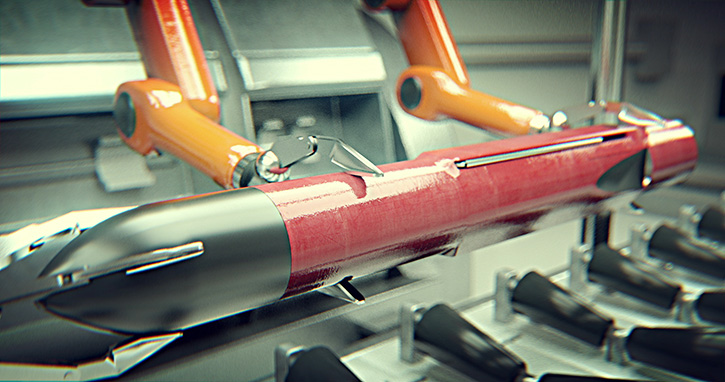MBDA is introducing today at the Paris Air Show a new, modular approach to missile design, as part of its traditional ‘Concept Vision’ theme. The new design dubbed ‘FlexIS’ is designed in standard diameters and comprises a common bus and flight control system, modular, contactless interface linking the seeker bay in the front and modular processor bank, providing the missile’s brain, located at the center. The rear part is also modular, accepting a variety of propulsion modules – miniature turbojet, single or dual pulse rocket with different propellant capacity supporting a broad range of applications.
Different warheads can be used, from ‘tunable effects’, proximity triggered fragmentation, shaped charge with penetration body etc. Topping the modular kit are common,composites made fairings, providing the outer and aerodynamically optimized fuselage for the weapon.
The modular design enable users to stockpile missile components rather than complete missiles, thus optimizing logistics and storage. This approach enable rapid evolution of fast changing elements, such as electronics and electro-optics, while keeping other components – such as propulsion units explosive or other energetic materials – last in storage and ready for use through their expected shelf life. The new approach would reduce life cycle cost and enable flexible evolution of missiles to meet future threats at incremental costs.

User air forces will be equipped with automated assembly systems enabling ad-hoc manufacturing of weapons for specific applications. This flexible approach will be particularly essential for carrier strike groups required to grow their combat capabilities (through new weapons variations) without increasing weapons storage space on board.
The futuristic concept would also reduces the restrictions required for the handling of energetic or explosive materials, since many parts of the final weapon will be non energetic. Hence, parts such as electronic cards, sensors, radomes, fairings, wings or actuators could be stored and transported to the carrier or airbase by conventional delivery services.





















